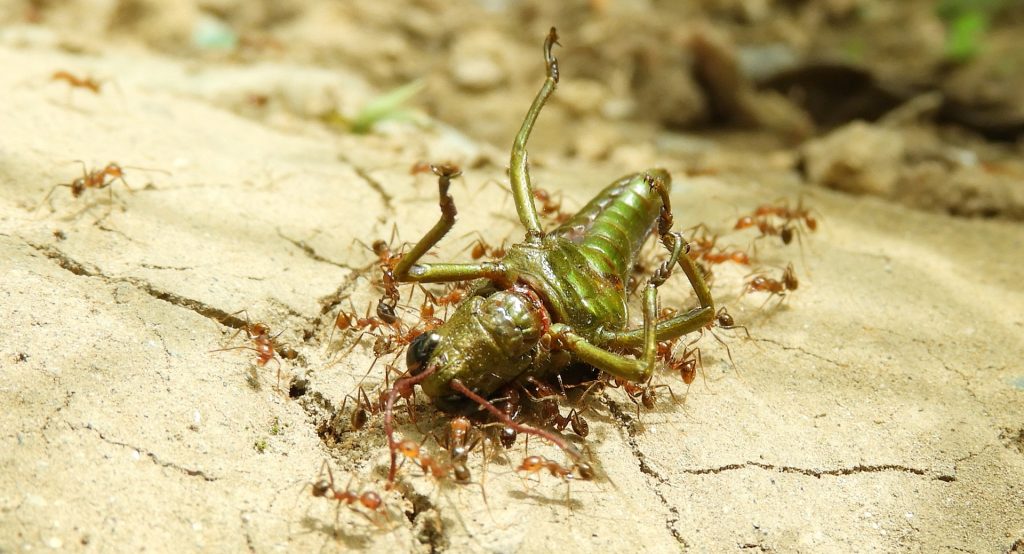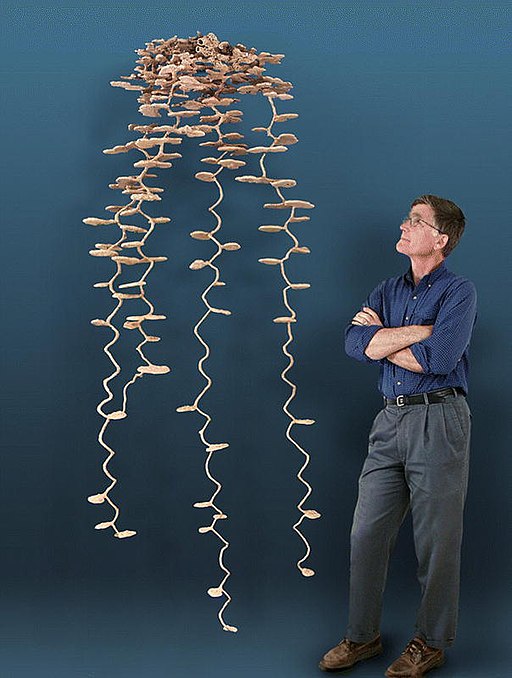Almost everyone has spent time observing ants as they forage for food, faithfully sprinting back and forth to their nests to deliver and store their goods. Although they can become a nuisance in the kitchen, it is hard not to be fascinated by the incredible speed, dexterity, coordination, determination, and ingenuity that ants display.

The social structure of ants is frequently studied—and admired—by scientists and laypeople alike.
Despite the popularity of commercial ant farms, however, how ants actually live inside their hills and colonies has largely remained a mystery.
Dr. Luiz Carlos Forti, a professor at Brazil’s UNESP (São Paulo State University) who has long studied the inner-workings of ants’ nests, knows more than the average person.
In a widely circulated YouTube clip (below), complex underground dwellings that look more like images of a futuristic space ship than those of an ants’ nest are revealed, showing Dr. Forti as he leads an excavation of what the narrator calls a “megalopolis”—a huge subterranean city built by leaf-cutter ants that spanned an area of more than 538 square feet and delved 26 feet into the earth.
The clip is part of a larger, full-length documentary (Ants! Nature’s Secret Power) that offers ant enthusiasts everywhere a glimpse into the tiny creatures’ hidden world.
Leaf-cutter ants live primarily in the tropical and semi-tropical rainforests of South and Central America, but they have also been found in Texas and other U.S. states. They are essential to the ecosystem as aerators of soil and also aid in crucial nutrient redistribution in the forests they inhabit.
The ants are, however, problematic for farmers, often ravaging crops at breakneck speed. They are also capable of destroying the foundations of buildings and cause millions of dollars’ worth of damage each year as they forage for leaves, which they chew into a pulp and mix with the feces of ants and other insects in order to cultivate a specific type of fungus that forms the basis of their diet. They further pose a hazard to livestock, competing for the grasses they eat. Animals as large as cows have also been known to fall into abandoned nests.
Much of Forti’s research has been centered on how to improve control over destructive populations of leaf-cutter ants. By studying the architecture of their nests, it becomes possible to make more effective use of insecticides, reducing both cost and damage to the environment.
There are other benefits, too. More information about the nests means more information about ants themselves—and an increased understanding about the biological principle of self-organization (how simple units of nature form larger patterns through interactions with one another). One method of studying the structure of an ants’ nest is to make a cement mould—a technique that has been used by myrmecologists (scientists who study ants) for decades.
The documentary shows Forti’s team creating such a mould by pouring a mixture of cement and water into a nest’s entrance holes, which were detected using steam from a thermal fogger and then mapped out (note that Islam prohibits the killing of ants unless they are causing damage to the surrounding environment, and the researchers in this case used an abandoned nest so that no ants would be harmed during their work).
The amount of cement required to make the mould was enormous; over a three-day period, the team poured an astonishing ten tons of cement into the tubes leading into the nest. After allowing the cement to dry, the team returned a month later to remove the soil surrounding the structure with the aid of heavy machinery, taking weeks to uncover the unique architecture of the ants’ nest—an intricate network of subterranean “highways” connecting chambers of various shapes and functions, including fungus gardens (where the ants grow their food) and rubbish pits.
According to the film, the tunnels work to ensure good ventilation, and also provide the shortest possible transport routes for the ants that use them. A similar excavation conducted in the U.S. state of Louisiana also revealed the presence of several vertical tunnels below the nest’s deepest cavity, extending to unknown depths. Some have speculated that such tunnels might serve as wells that allow a nest’s inhabitants more convenient access to water.
During the course of his research, Forti has uncovered nests in Botucatu, Brazil that contain up to nearly 8,000 individual chambers (some as big as a football), and excavating the deeper parts of nests has taken up to a year.
In order to build the nest featured in the film, millions of ants had to cooperate to move 40 tons of soil, bringing billions of antloads of soil to the earth’s surface. Leaf-cutter ants can carry as much as six times their body weight. They are also quick. In human terms, each worker has the ability to run the equivalent of a four-minute mile for more than 30 miles—all while carrying the equivalent of 500 pounds on its shoulders. Also noteworthy is the strength of a leaf-cutter’s jaws. Not only can their teeth cut through leather, but Native Americans have long used them to clamp down on wounds and suture them.
Ants are expert architects, yet scientists point out that no “expert ant” taught them how to build and sustain colonies of such magnitude. They never took special courses or held meetings to discuss their plans for building. Walter Tschinkel, a world-renowned myrmecologist at Florida State University, noted in an article in Discover Magazine that the behavior of ants is “somehow internally programmed.” Although there are clearly rules, it is not clear how the ants know the rules and follow them. “How does a group of individuals with no leader, no plan, create such complex structures in the dark?” wonders Tschinkel.

For Muslims, the answer is clear. “A perfect system cannot be other than the artwork of an intelligent designer,” asserts Adnan Oktar in his book, The Miracle in the Ant (Oktar is a popular Turkish author who writes about scientific topics under the pen-name Harun Yahya). “Ants are creatures who have been living under a social system and in groups since the day they were first created. This, in turn, is proof that ants have come into existence in one single moment with all their characteristics intact and, if we wish to phrase it better, that they have been ‘created.’”
In the Quran, Allah SWT describes animals of all kinds as being part of “communities like you.”
There is not an animal (that lives) on the earth, nor a being that flies on its wings, but (forms part of) communities like you. Nothing have we omitted from the Book, and they (all) shall be gathered to their Lord in the end.
Quran 6:38
With chapters named after both the ant (Surah Al-Naml) and the bee (Surah Al-Nahl), the Quran further draws one’s attention to the complex social systems found within each insect community. Those who study these highly organized communities are sure to derive lessons from which humans can benefit as well. Not only are ants hard workers, they are also team-players who do not allow personal desires to override the work they do for the good of their colonies.
Allah SWT tells us: “Indeed, within the heavens and earth are signs for the believers. And in the creation of yourselves and what He disperses of moving creatures are signs for people who are certain [in faith].” (Quran 45: 3–4)





